60 years ago the Mizune freighter line built one of the biggest dams in Japan. The line was specially constructed in the 1940s, with some 20 tunnels and bridges snaking through the west Tokyo mountains, to ferry supplies from the sleepy hiker’s village of Okutama to the construction site for the Ogochi dam on Okutama lake.
It must have cost millions to blast those tunnels and build all those bridges. Still, the line was abandoned after completion, and now remains high above the still-operational road to the dam, like a hidden super-highway for local fauna.
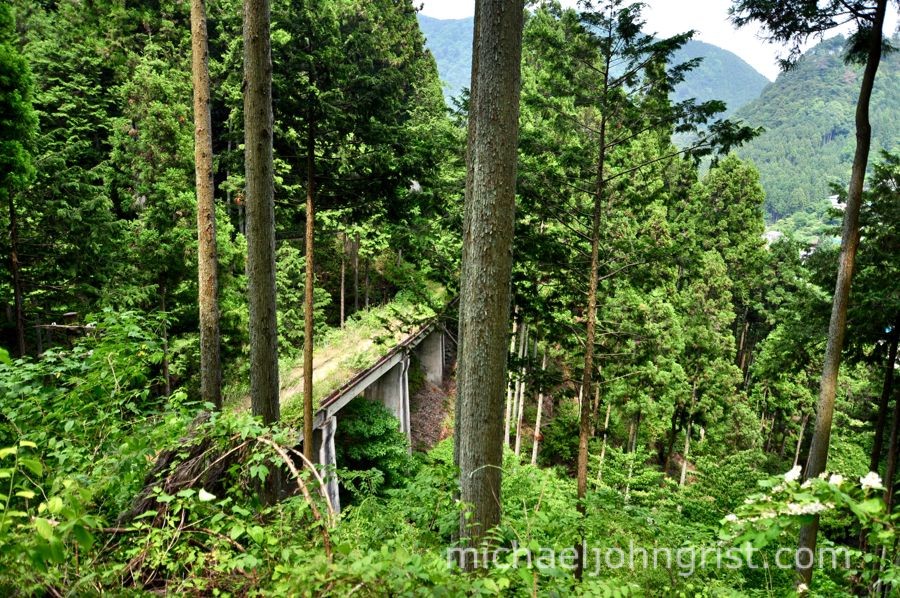
A concrete bridge along the Mizune freight line.
Ogochi dam was a Tokyo dream since the 1920s, though it wasn’t completed until 1957, due to the difficulty of relocating 6,000 Ogochi valley-inhabitants, the advent of World War 2, and sabotage by Communist party protesters. At 149 meters (489 feet) in height it stands only 37 meters (121 feet) lower than Japan’s tallest dam. It serves primarily as a drought-prevention reservoir, but also has two hydro-electric turbines which produce (a fairly measly) 19,000 kW. At the time of it’s construction, it held back the largest man-made reservoir in the world, at 189 million square meters of water.
Last weekend I went with SY to find and hike the Mizune line from Okutama through to Ogochi dam. It’s the kind of haikyo I love, because it’s big. The vision of blasting and bridging a path through the mountains to a dam site was a pure act of imagination and will, massive in scale and ambition. The longest tunnel, which we walked through in the dark, is 440 meters long (over a quarter mile), and must have cost at least a million dollars in itself. And now it’s completely abandoned.
We started early, leaving Tokyo around 8am, since the train ride to Okutama takes a little over 2 hours. We got in amongst a small throng of other hikers, had an early lunch of kaiseki ryori (fancy Japanese lunchbox with many little ‘tastes’ of different foods, such as tempura, grilled fish, pickles, etc) in a cute little restaurant, then headed out. We didn’t see any other hikers again for about two hours.
Finding the Mizune tracks was easy, though I hadn’t been able to find any evidence of their existence via Google maps, which I’ll normally use to confirm a location. I couldn’t figure that out, since I knew the line had numerous bridges, and figured these at least must be visible from the air. But once we got on the trail, and the bridges, the reason became clear- the line does not bridge any river or road. Rather it wiggles its way around the mountainsides, sometimes boring through, only using bridges to leap gaps between mountains.
This made it invisible to the air, since all the mountains, gaps, and bridges themselves were all forested, and in unexpected places, so perfectly camouflaged.
Still, I knew the tracks criss-crossed with the ‘old’ hiking trail, so just started out along it, and after a few mistakes climbing the switch-backed paths up to private residences, we found the track, and its first tunnel.
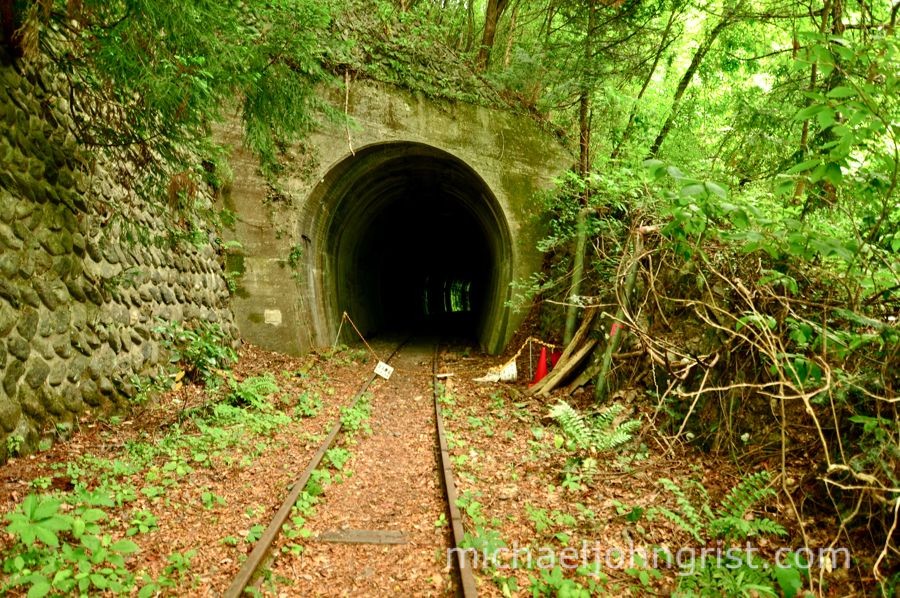
First, and most unremarkable, tunnel.
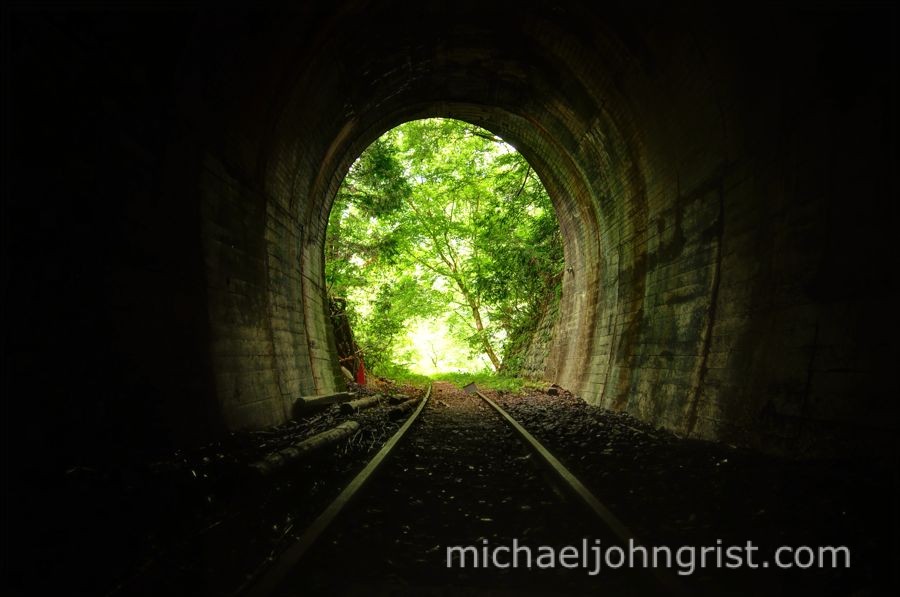
Looking out of tunnels is always more impressive than looking in.
We cheered. We ventured in and out to just get a feel for tunnel life. We read the warning sign on the ground, telling us the usual ‘Forbidden’, as well as another more creative attempt to deter trespassers- ‘There are serious mosquitoes ahead’, or something to that effect. We were on the tracks, and ready to roll.
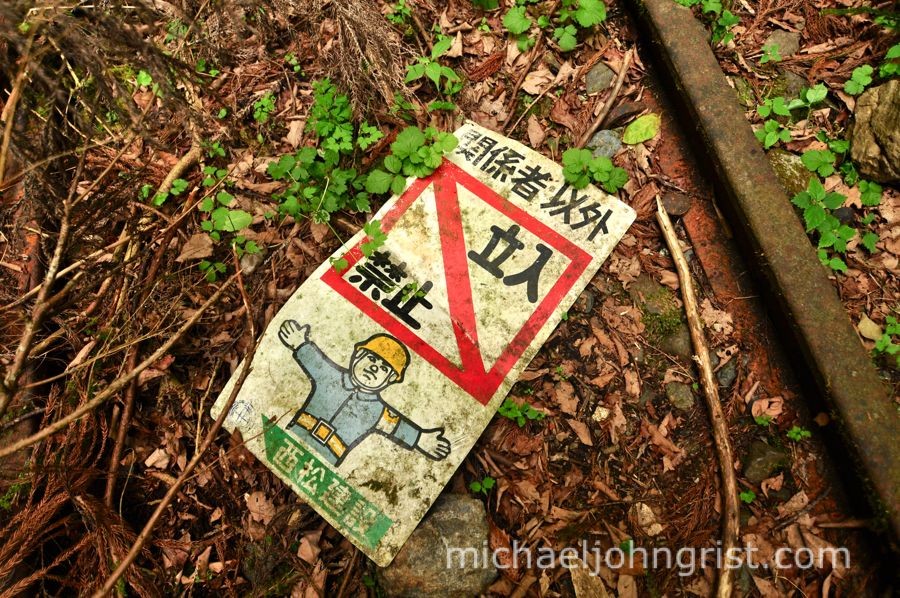
The usual ‘Do not enter’ signs.
Soon we hit the first bridge, a kind of metal trestle thing running along a steep part of the mountain-side. Now, in this case walking the bridge may not have been necessary. There was the hiking trail alongside, but we couldn’t know when the two would hook up again. And the bridge looked very mangy. 60 years old and heavily overgrown and rotted, with a substantial drop underneath, we had to man up and just do it. The wooden parts looked very crumbly, so instead we stuck to tip-toeing along the rails. I took video of me walking, which you can see at the bottom of the post.
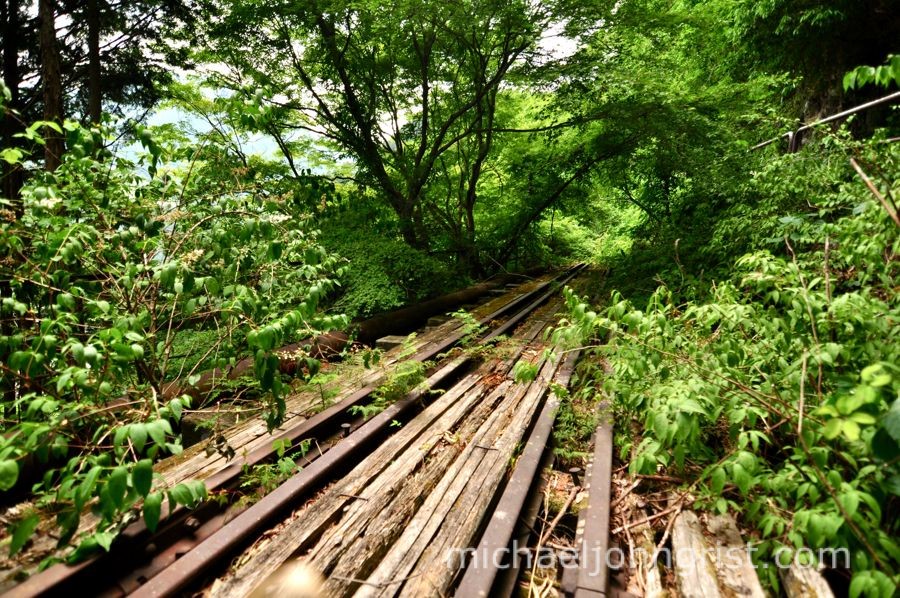
We could have walked on the wood, but didn’t trust it.
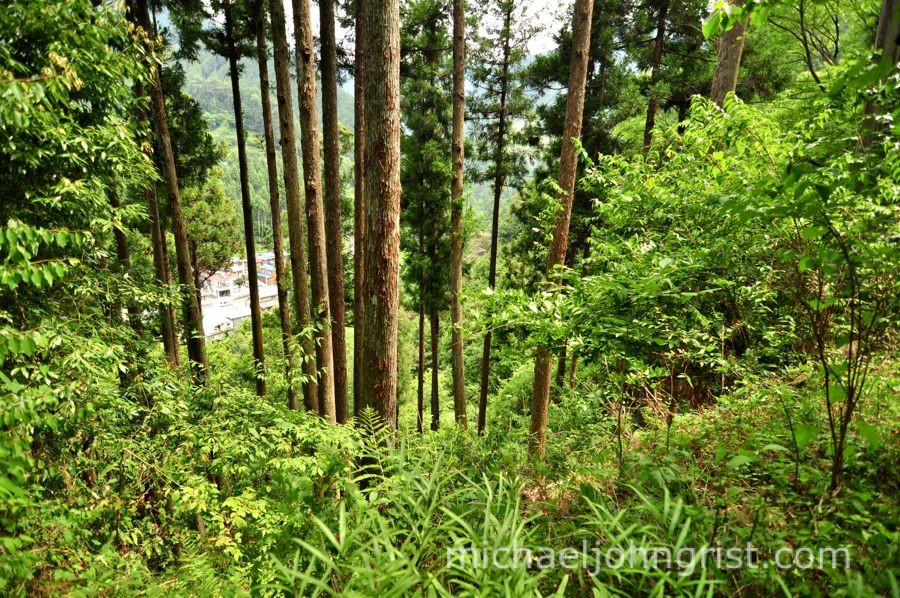
The view off the side.
It was nerve-wracking, but we did it. The bridge did not collapse. And on we went. Soon was another bridge, but this one was much easier- a wide concrete affair with lots of grass and no holes that we could slip through. Standing in the middle of it looking to either side, out on a beautiful mountain view which we had all to ourselves, was stunning. I love rural haikyo for this reason.
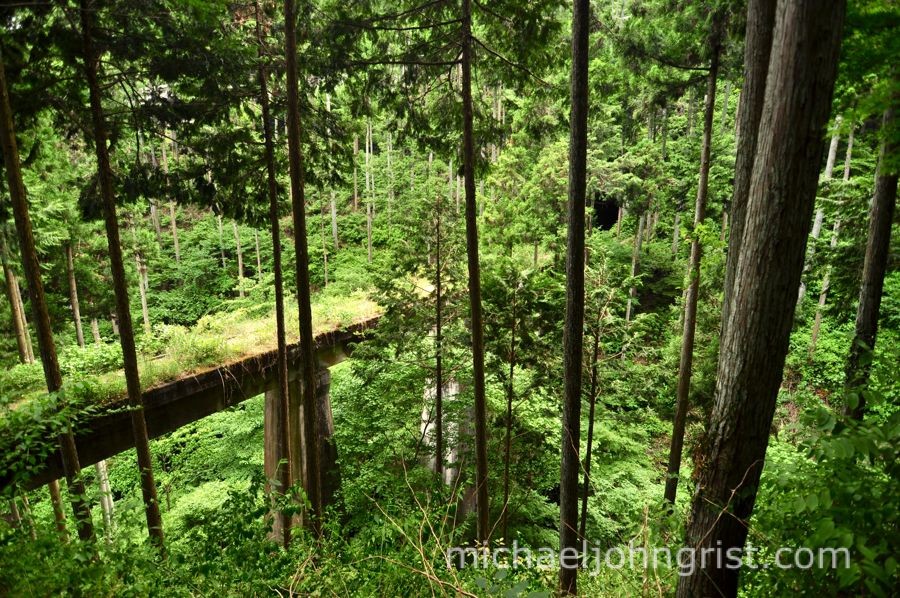
Side view of the first concrete bridge.
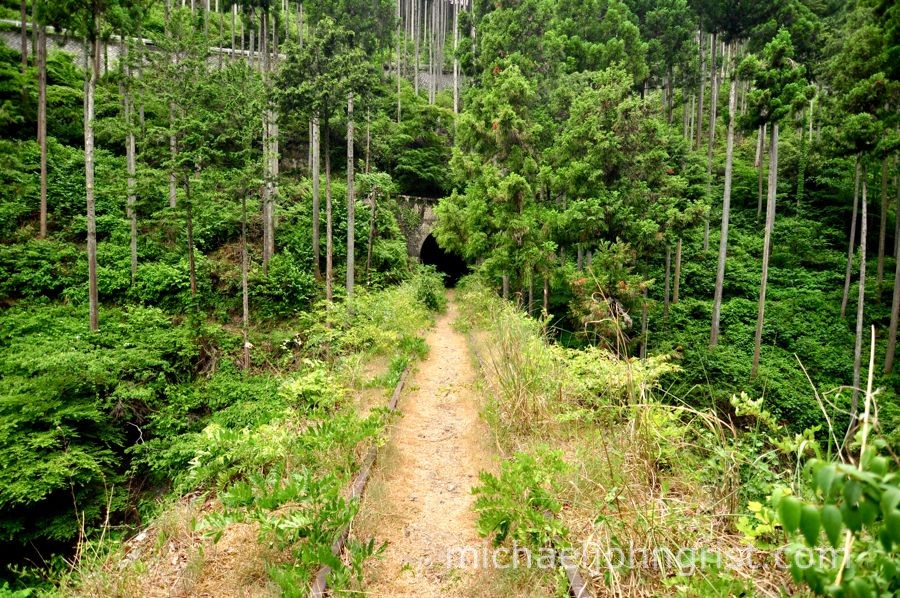
Walking along the first concrete bridge.
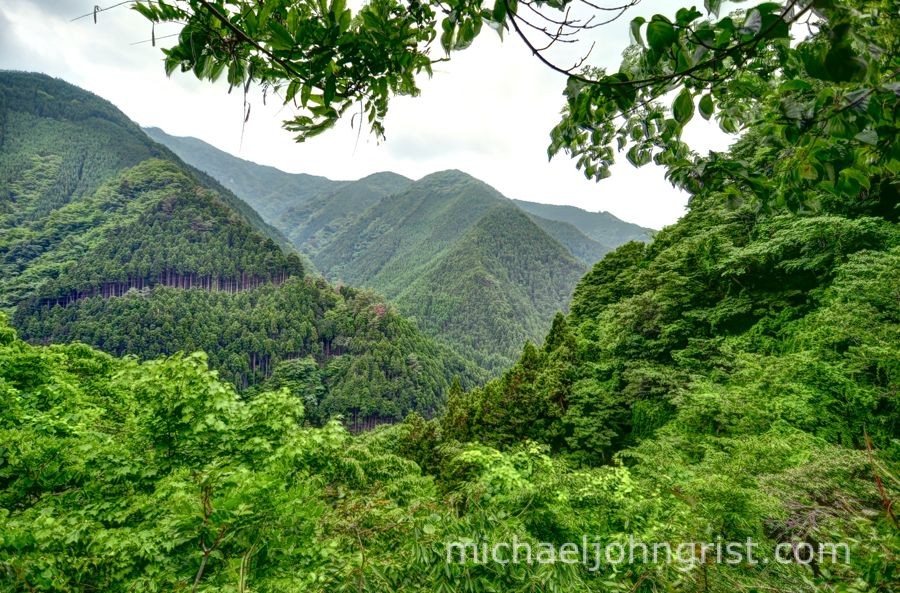
The view off into the distance.
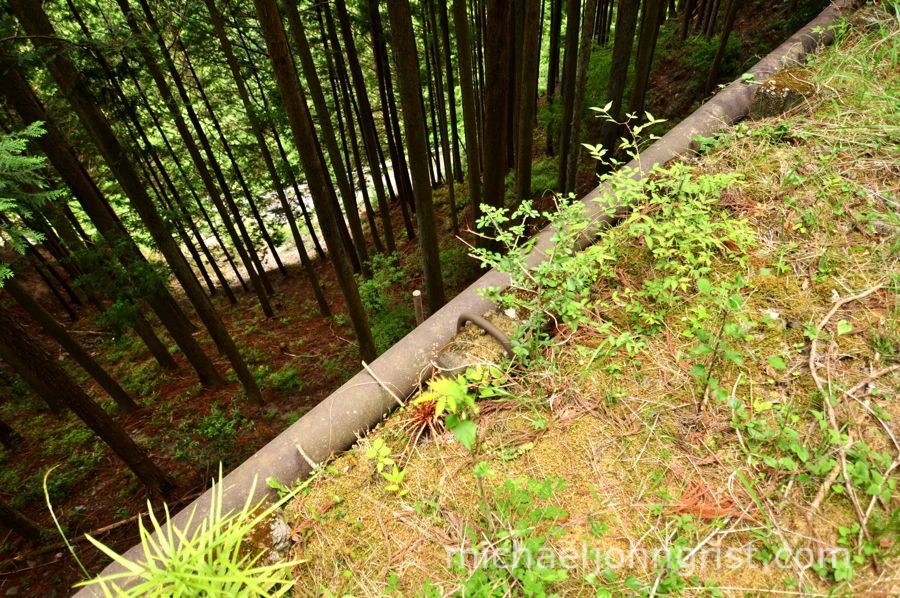
Down one side.
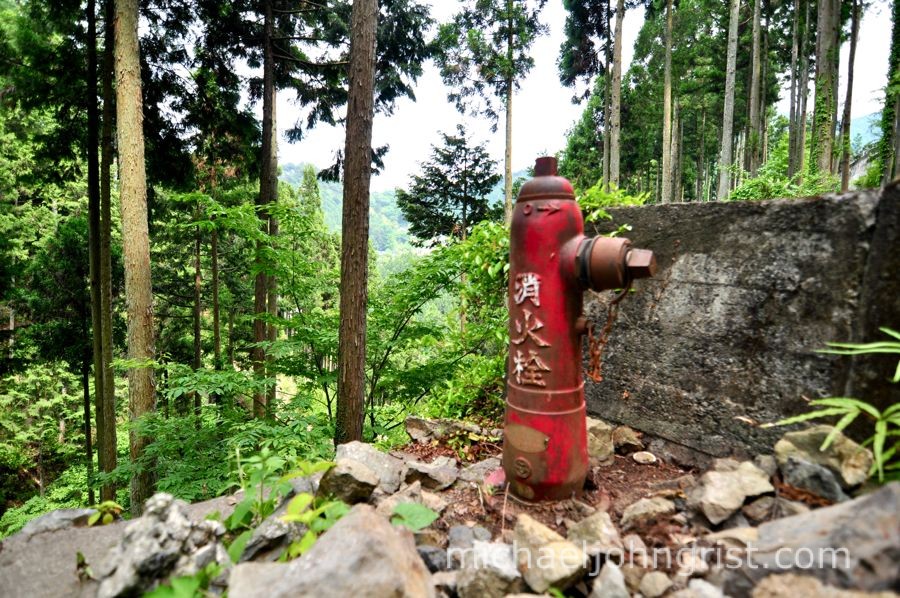
Atop the next tunnel mouth, a fire hyrdant.

Side view looking back.
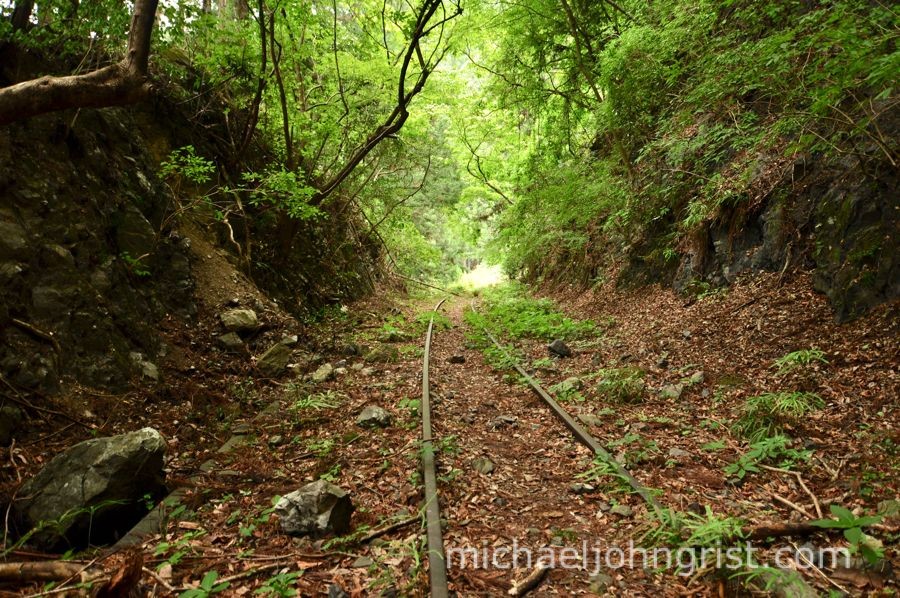
Heading on.
After that, it became a simple procession of bridges and tunnels. Concrete bridges were great, totally stable, wide and easy to walk. Trestle bridges were always a challenge though, and in one case we had to demur and side-track down to the mild ravine and back up the other slope. In that case the trestle had only very large blocks, with very large gaps between them. We’d have to stride across each gap, with no leeway either side. The chance of falling bodily through a gap, or simply straight off the side, just seemed too daunting.
I’m glad in this case we could take the low-road.
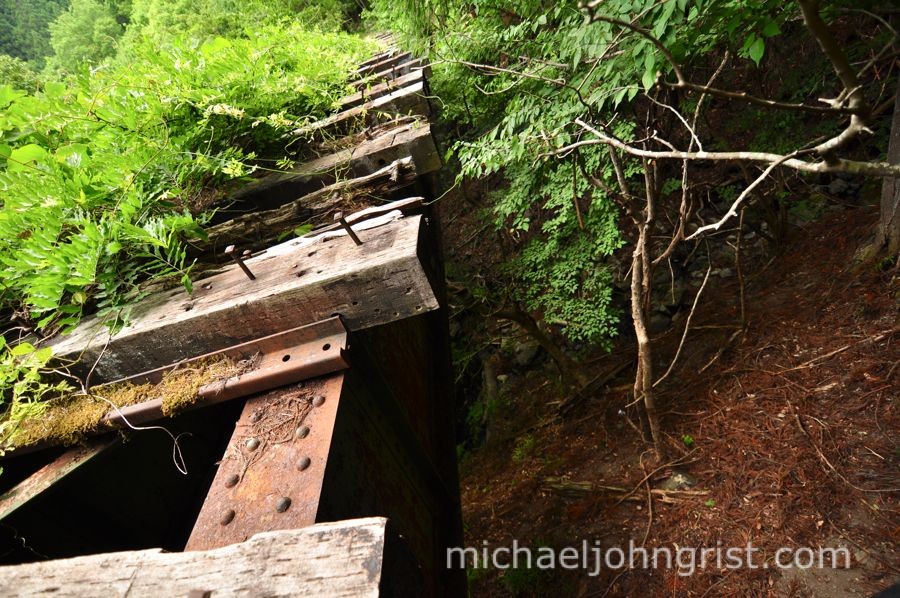
Trestle bridge with wide gaps. The video gives some idea of the strides required to cross.

View from up the culvert where we crossed. It was higher than it looks here.
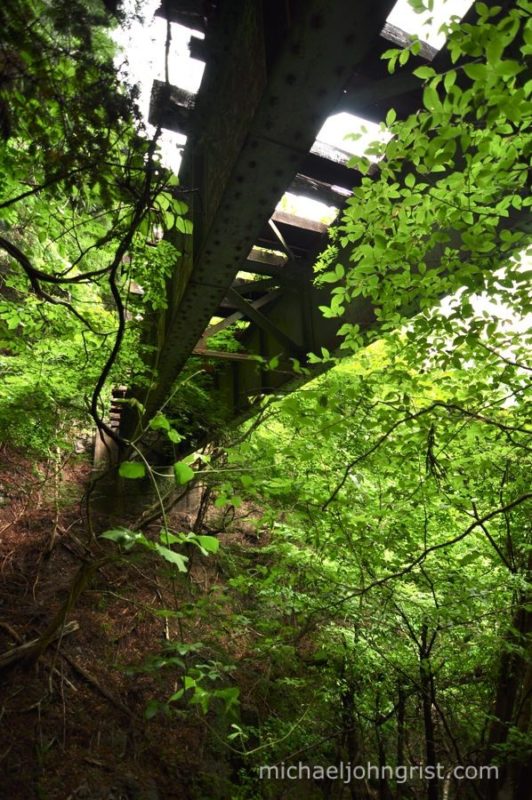
Troll’s view from below.

Looking back.
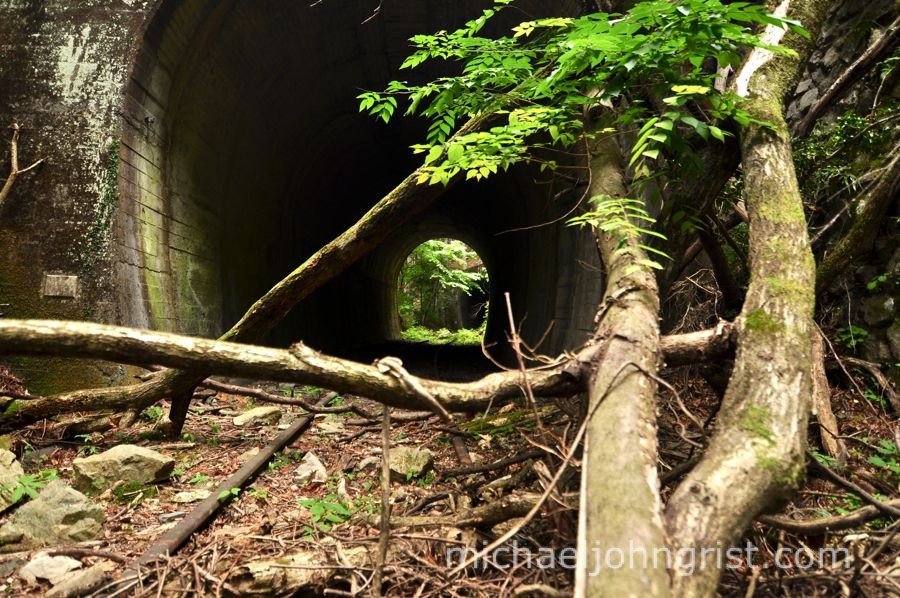
Looking forwards, to another tunnel.
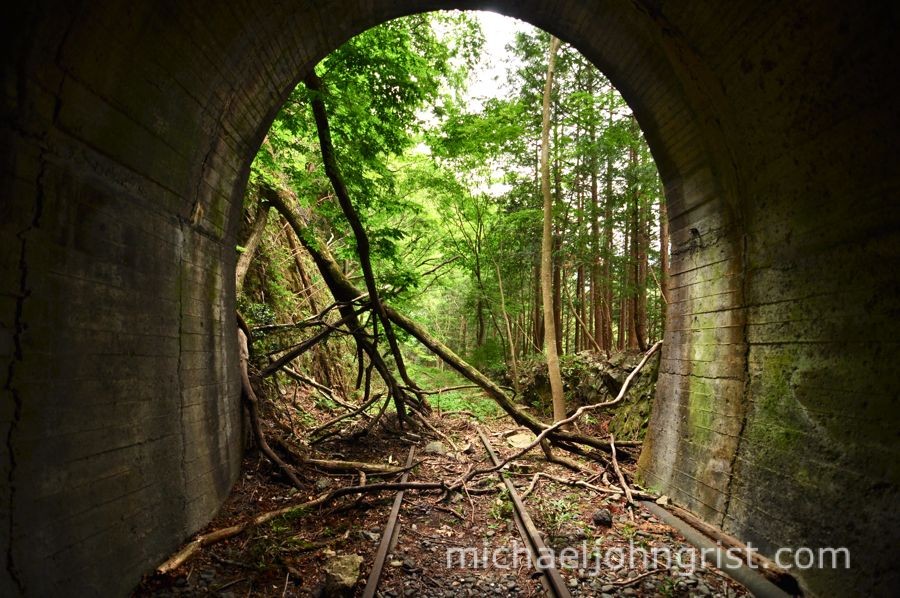
Backwards.
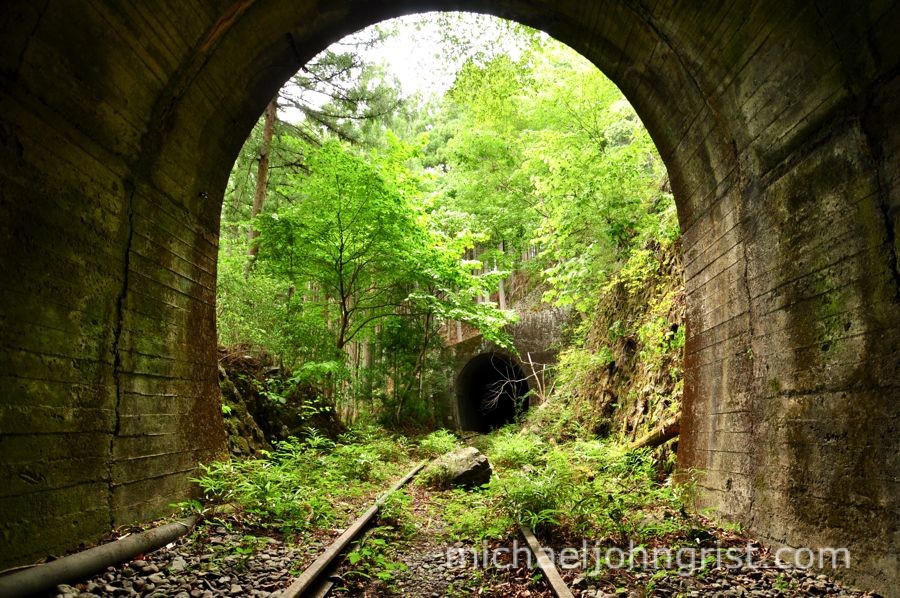
Forwards.
In later cases, in particular one very long trestle that leaped a large mountain culvert, there was no way to go down. However with that there were no large gaps, the track was rotted but wide, and we could walk on the rails directly. I wish I’d stopped in the middle of that one for a photo, but was honestly just too worried about my own balance, and about delaying SY behind me, that I just pushed through and completed it. It was a long stretch, took maybe 5 heart-pounding minutes to cross, and the most exposed we ever were.
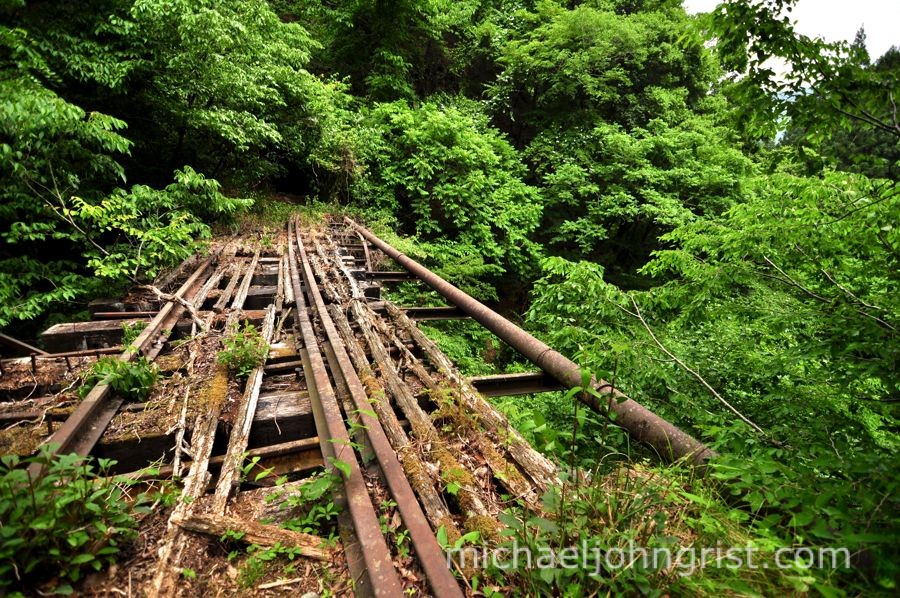
It’s hard to get across how long this bridge was.
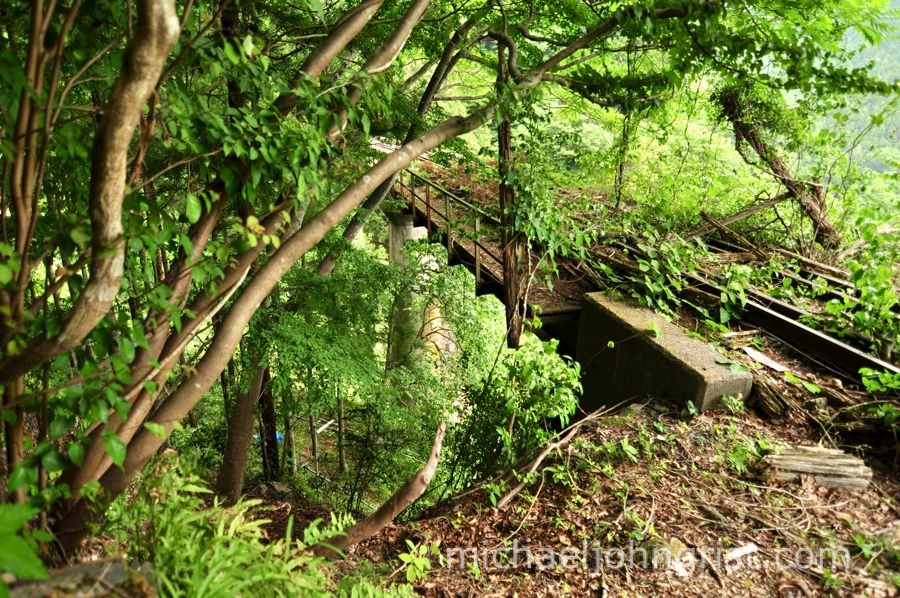
Looking back, too steep to climb up really. We had to cross.

This photo, from here, gives some idea of how high and exposed this particular trestle was.
After that came the longest tunnel. It had the biggest effort made to block it off, though of course some prior hikers had cut a way through. Standing in front of it you could feel the steady flow of the mountain’s cold breath, exhaling. We switched on our flashlight and headed in.
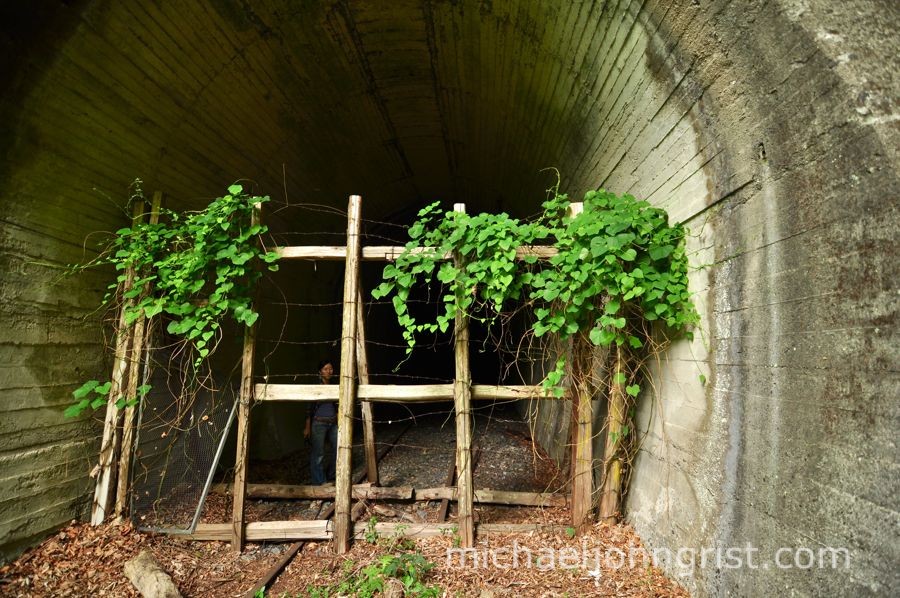
Quite well defended.
It was long, and dark. There is not a great deal more to say than that. 400meters is a long way in the pitch black, but in this tunnel there were no bats, no dripping water, nothing. It was a good solid, if chilly, tunnel.
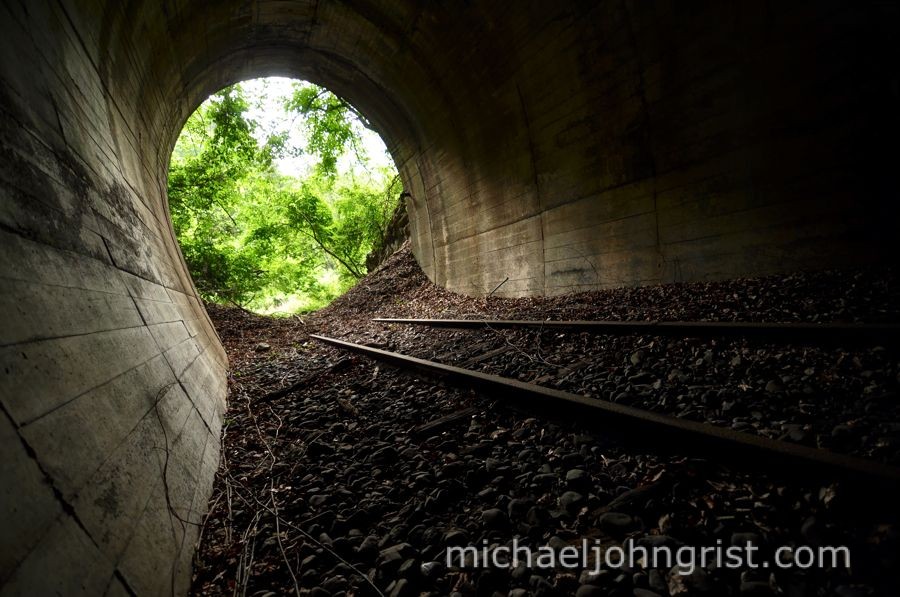
Dramatic tunnel exit.
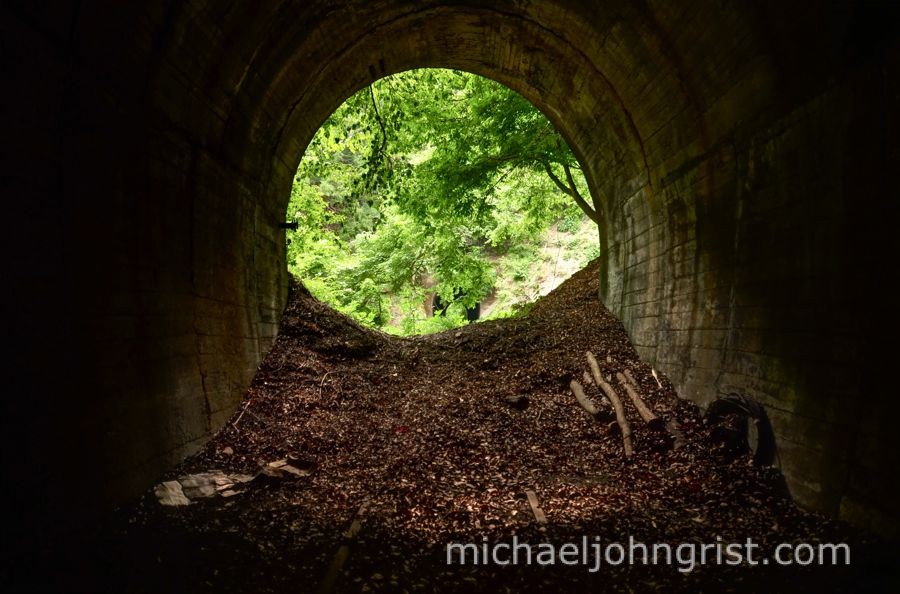
This tunnel’s end was stuffed up with crinkly old leaves- strange to see since it was summer already. Probably they took shelter in the tunnel mouth and just didn’t rot.
Beyond that, we found a dam, complete with it’s own mini-concretized water-slide. Almost all the rivers and streams in Japan have been concretized, I’m not really sure why. This one was no exception. Standing upon the flow-zone though, looking up at the dam, was a strange sensation, maybe similar to what the orc-hordes felt when they assaulted Minas Tirith. Just, what are we gonna do about that? How can we fight that? If the water had come out in a torrent, we would’ve been washed away…
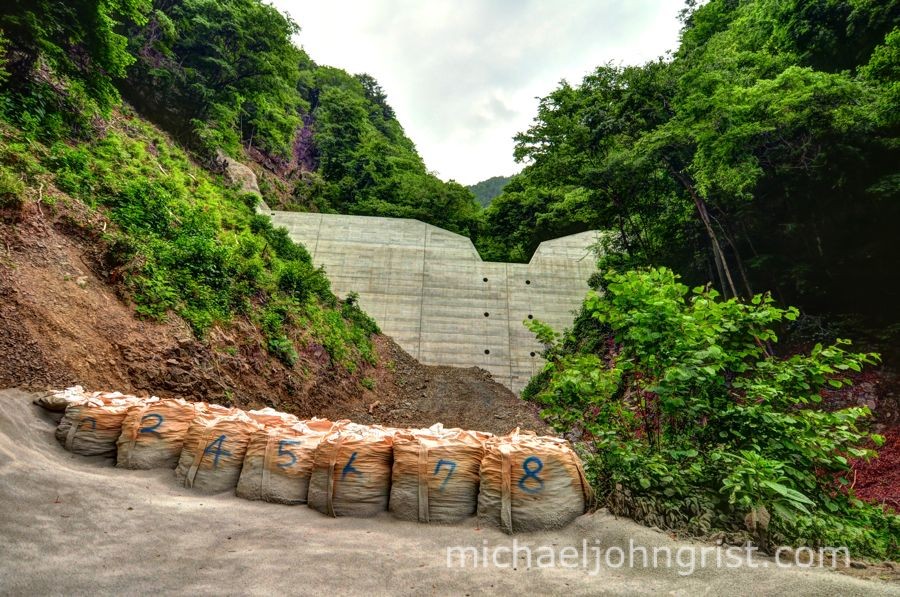
Mini-dam en route.
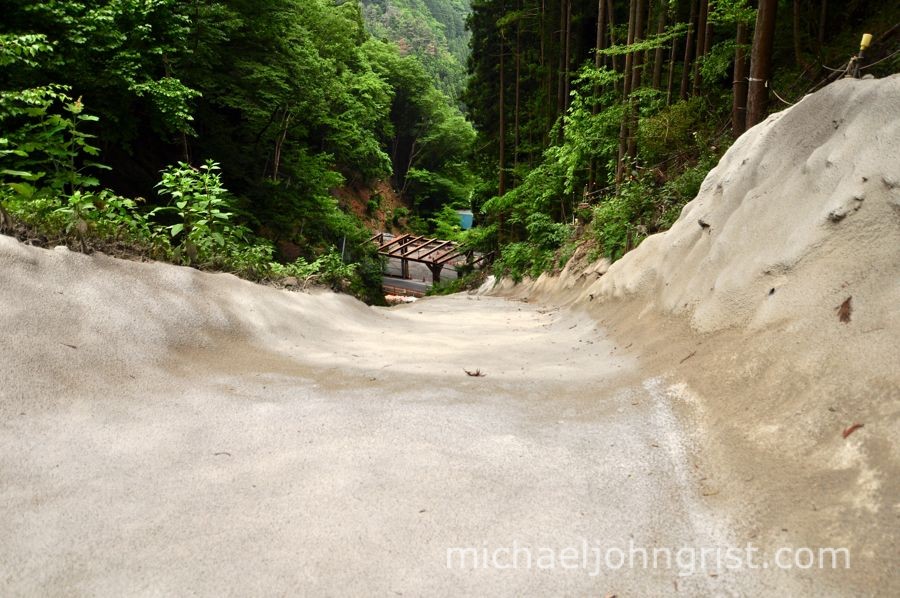
Concretized water-slide.
There was some workman-type stuff lying around, clearly a project in progress, so we hurried on.
Next up, we saw some other hikers. At first we were nervous- this seemed a really remote place to bump into other people. They could easily shove us off the rail to our death, and who would know? However it turned out to be a couple on a date, with the girl in a skirt and pumps. No way had they cone the way we had, so I figured we must be near the dam, and they’d come the other way. I said hello cheerily, which I find helpful in such situations, and asked if we were near.
Maybe the boy was nervous too, because he mumbled a hurried “Not far.”
So we did our last two tunnels. In the final tunnel, their were bobbing flashlights coming towards us, as water spilled down through a crack in the pitch black above.
“Hello,” I called, and they replied. On we went.
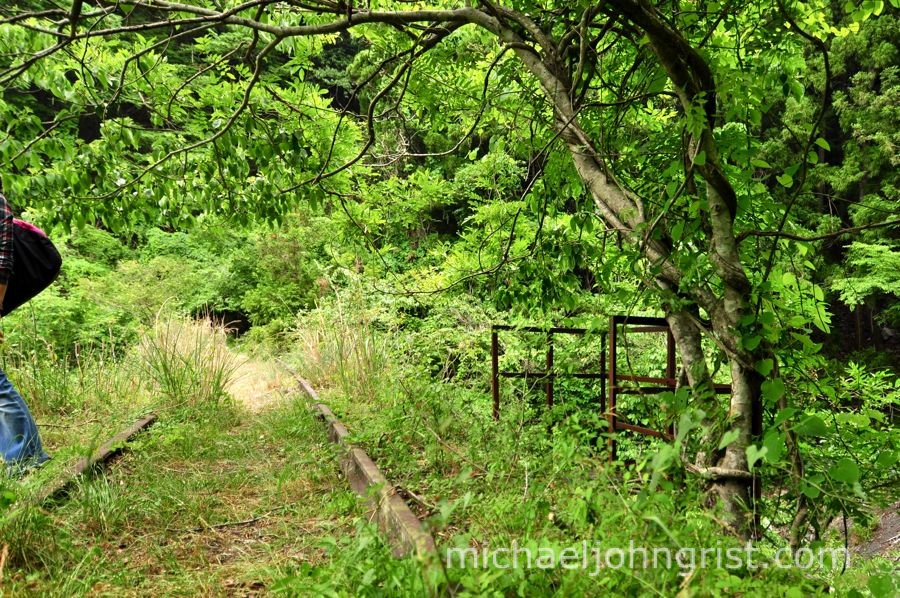
One of the last bridges.
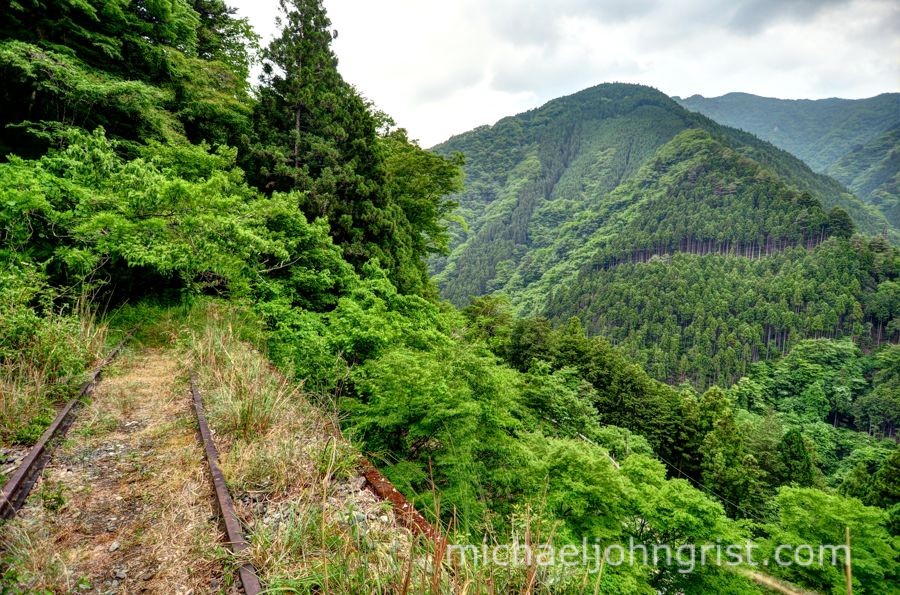
One of the last grand views.
At last, we emerged to behold the majesty of Oguchi dam. Though I suppose it was kind of a side-view, and not particularly impressive (you can see it in the video). We walked a final bridge, and emerged into an empty car park. Anti-climactic. Still, the dam awaited, and we only had to climb some stairs nearby to get to it.
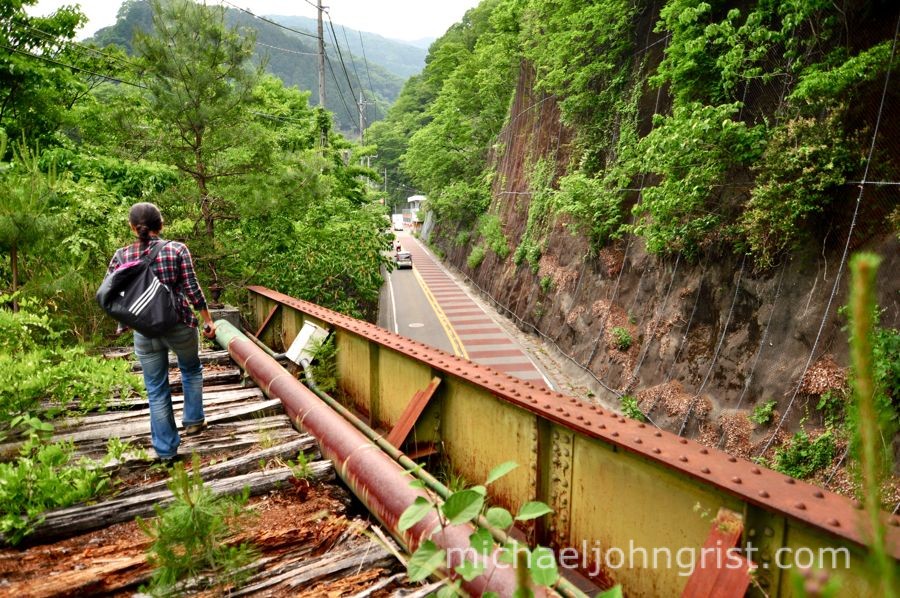
SY walks on the final bridge.
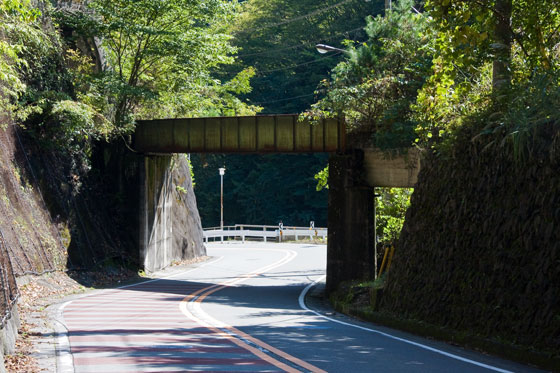
You are more likely to see this bridge from this angle, as it’s over the road back to Okutama.
Then there was the dam. It was big and grey, because it was a big and grey day. SY promptly took a nap, while I went off for ice cream, the fitting reward to hike-yoists who’d toiled for nearly 3 hours through darkness, underbrush, and across yawning chasms. I wanted strawberry-vanilla flavor but they were out, so had to settle for grape and vanilla. Still, yum.
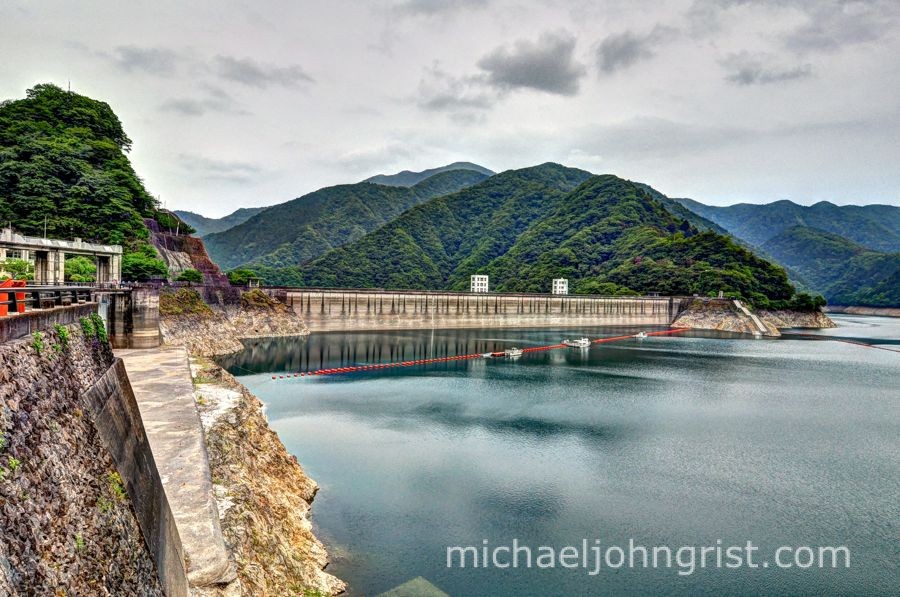
Large and in-charge.
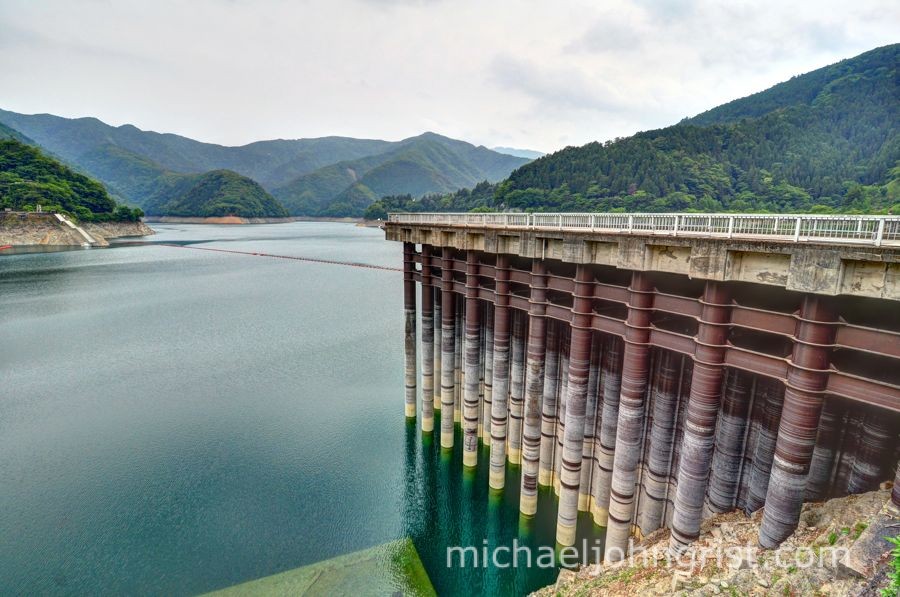
Stretching back up the valley a long way.
And that was that. We rode back on the bus, getting home some time around 8pm. A full day, and the reason why we don’t often venture out of Tokyo- it just takes so long. But its absolutely worth it when we do.
Watch the video here:

Comments 6
I discovered this railway line a few years back while walking from Okutama. I had no idea at the time what it was, or where it led to. We followed it all the way to the top ( though not walking through any tunnels or across any of the bridges).
I seem to recall some kind of small museum or visitors centre near the lake, I think there was a tiny bit about the railway, but it was not until I got and did a bit of research that I realised exactly what it was for and when it was built.
Seems a real shame they never used it again. You would imaging nowadays they could run it as a tourist attraction taking visitors to the lake. But the state of now means it almost certainly will never be used again.
Author
Thanks for your comment, Jon. I wonder how you managed to follow the old tracks if you didn’t walk them- were they visible from the Mukashi Michi (old trail)? I know the two interweave at least at the beginning, but we never saw the old trail again after about 30 minutes on the old tracks.
Or perhaps you mean from the road below?
As for a visitor’s center, yes, that’s where we bought the ice cream. There may well have been something on the tracks- there certainly were some museum-like areas. We were just ready to go home by that point though. Perhaps there are some good old photos of the tracks (or dam) being built though, that would be a neat counterpoint to how it looks now. Ah well.
it was three or four years ago now, can’t recall the exact path we took. I do remember having to scramble up and down a few slopes at one point to get back on to a path when we did not fancy the tunnels or bridges.
I must try and dig out the photos I took.
Back in the saddle again? 🙂
Great find, I love abandoned railway tracks and I wish there were more nearby…
Author
Perhaps sitting on the edge of the saddle 😉 . If I could find great locations like this, within reach of Tokyo, I’d definitely go more often…
It’s really interesting to see a construction or contractors railway left intact.
When I was in highschool I read up on an old temporary railway that had been built in the early 1900s by contractors to facilitate with the construction of a reservoir in North Yorkshire.There’s no remains of this line at all because it was dismantled before the reservoir was filled thereby flooding the area where the tracks had been.
I wonder why the Mizune construction railway was left virtually intact? No track was lifted and the bridges and tunnels were left as they were.
I think it could have been made into a tourist railway in the 1960s or 70s when the bridges/trackbed were probably in better condition.But sadly I think the bridges are just too far gone to repair economically.
It’s a great and interesting ruin,though.The landscape around Okutama looks very nice and peaceful.
Good to see new haikyo!